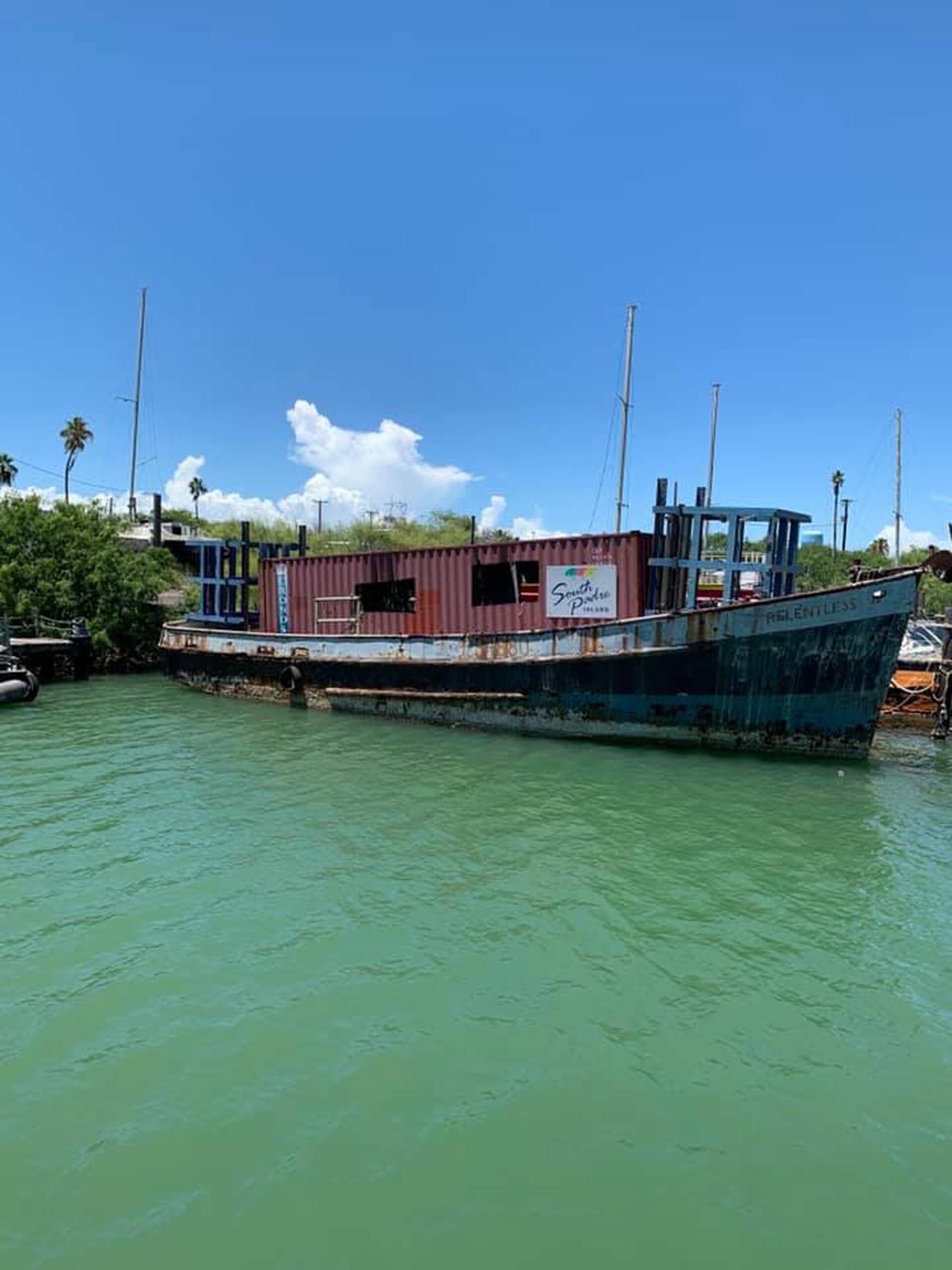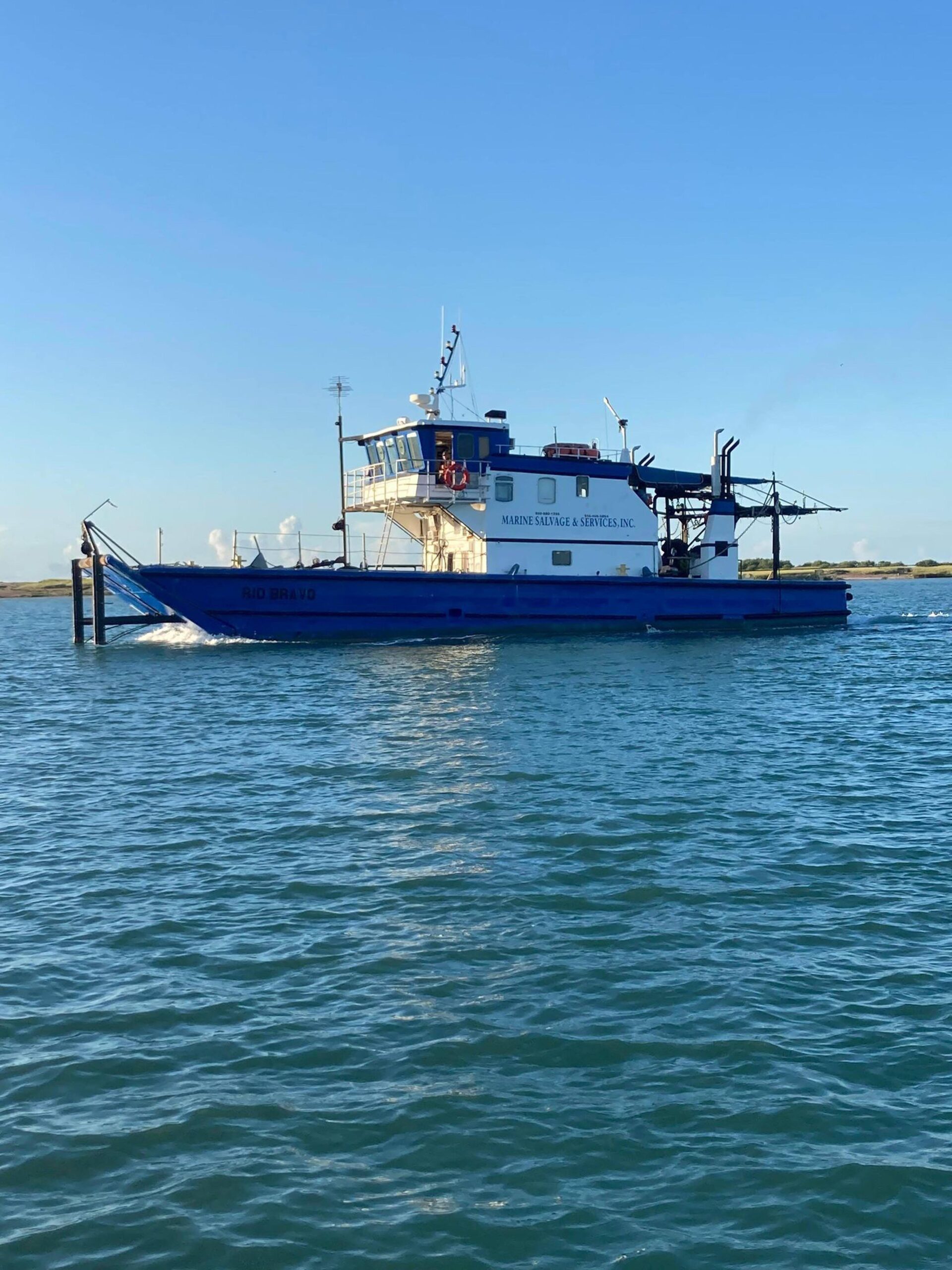
SOUTH PADRE ISLAND — Prior to Friends of RGV Reef’s efforts, this area at the bottom of the Gulf of Mexico was once bare and lacked a safe place where fish could protect themselves and stay out of the sea’s swift current.
After years of deploying boats, concrete rail ties and massive cinder blocks about 12 miles north of the South Padre Island jetties, this location has transformed into a flourishing artificial reef that helps carry multiple species through their life cycles.
On Tuesday, Friends of RGV Reef sank two retired shrimp boats and an old steel sailboat in the RGV Reef.
Dr. Richard Kline, a UTRGV School of Earth, Environmental and Marine Sciences professor, has been involved with the RGV Reef project as its science advisor and diver.
“We’ve surveyed this area before there was any structure down there,” Kline said. “There were very few fish. Now, there are all types of reef fish — red snapper, triggerfish, groupers and other things.”
This week’s additions to the reef make up a total of seven boats that have been sunk in the RGV Reef. The sail boat is about 50 feet long and the two shrimp boats are about 70 feet long.
“They’re going to make a great habitat because they’re going to be high relief,” Kline said. “They’ll end up having lots of fishes on them and they’ll last for decades out there because they’re steel hulls. Fish really love boats.”
According to Kline, the RGV Reef has more sunken ships than any of the other reefs along the Texas Coast.
“It’s fantastic. This started with a conversation around a conference table and now we have a two and a half square mile reef with all these structures in it,” Kline said. “It’s almost like a playground for us divers and there’s lots of fishermen that we see out there every day in this big wide area catching fish.”
Boat sinking
Kline said sinking a boat is a very long and involved process from beginning to end.
“You first have to get the boat,” he said. “Then, it has to be thoroughly cleaned, so it has to be pressure washed of any oil or other things it had in the boat.”
According to Friends of RGV Reef President Gary Glick, Captain Daniel Bryant manages the cleaning and preparation of the boats, which takes months to complete.
Another step in the process is making sure the boat can handle a trip to the RGV Reef, so an inspection is needed.
Kline said it takes about an hour to sink the boat because it has to be placed exactly where it needs to sink.
During Tuesday’s boat sinking, Kline gave coordinates and placed marker buoys. Upon doing this, the anchor was dropped and the flooding process began.
In order for the boat to sink during the flooding process, valves and holes are made on the boat prior to towing it to the RGV Reef.
“The last step is we want to make sure that these boats can stand upright on the seafloor so we have large floats tied to the top of the boat so when it goes down, upward force is pulling the boat straight up and down,” Kline explained. “Once it hits the seafloor, a diver will have to go down and cut the lines to let the big floats back up so we can use them again.”
According to Kline, the three new additions to the RGV Reef are going to make a big impact because they stick up about 20 feet or more from the bottom of the ocean.
“Fish love high-relief areas,” he said. “They can hide from the currents inside the boat. There’s lots of different types of habitat on it.”
During the next deployment of materials, more items, such as concrete railroad ties, will be dropped off near the boats.
Glick said the group has found that when more concrete material is added around sunken boats, they’re more productive.
“When you add that complex material it pulls organics out of the water column which generates a bio mat in the mud,” he explained. “This jumpstarts the bottom of the food chain and feeds the little shrimp, crabs and micro and macro marine invertebrates.”
Glick added that the complex materials protect the juvenile fish from predation, which allows fish to grow.

Red snapper project
The RGV Reef has been creating habitat for juvenile red snapper and other reef fish since the project began in 2014.
Kline and graduate students in the UTRGV Master of Science in Ocean, Coastal and Earth Sciences Program are conducting research on red snappers in the RGV Reef.
Starting in early June, Kline and the students have been measuring, weighing, and tagging the fish to study red snappers’ movement and growth while utilizing the reef.
Students Keegan Angerer and Marybeth Weihbrecht assisted Kline during Tuesday’s boat sinking.
“It’s neat to be out there and see part of the action for what they’re adding to the reef that I’m studying for the red snapper,” Weihbrecht said. “It’s exciting because there’s so much intense community involvement that goes with the sinking of the ships too because it takes so much help from so many different people.”
According to Weihbrecht, there hasn’t been a red snapper tagging program in this area in more than 15 years.
“I especially find this project special because there is such a rhythmical partnership going on between government, industrial conservation and academic groups, which is what I’m a part of,” Weihbrecht said. “It’s usually not easy for all of those moving parts to effectively work together so I think it’s pretty powerful when it does happen.”
Weihbrecht added that the project is also getting help from local boat captains who are also putting tags.
“I feel really lucky to be a part of this,” she said. “I’m really excited to see all the research to come out of the reef from the tagging program and other studies that are going on.”
Community support
According to Glick, the RGV Reef has about 72 million pounds of concrete in it right now and is the largest reef off the Texas Coast.
Glick said it’s the community stepping up and helping that makes the RGV Reef project successful.
“A big thanks to every one of our heroes for believing in our vision. It’s funny, three to four years ago we were probably talking to five different organizations asking for help,” Glick said. “We now have over 30 plus organizations that are assisting us in making RGV Reef the largest industrial scale nursery reef in the world. We couldn’t have gotten this far without your help.”
For more information about Friends of RGV Reef or to make a donation to the nonprofit, visit www.rgvreef.org.



